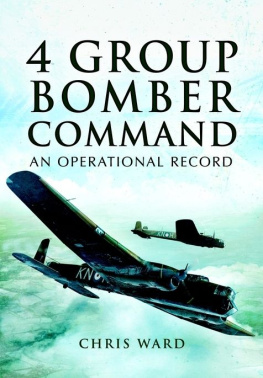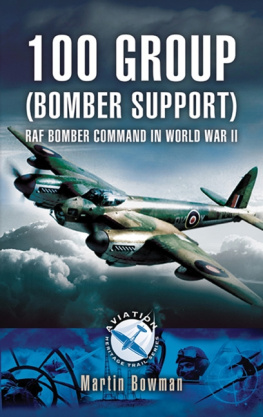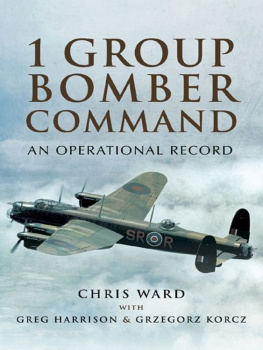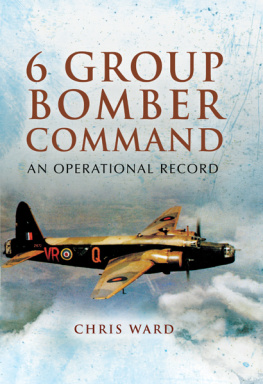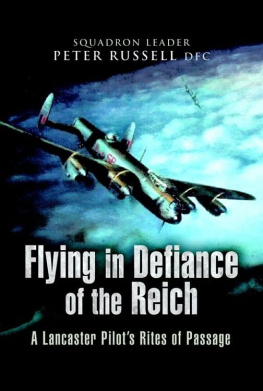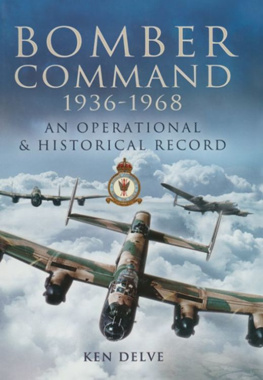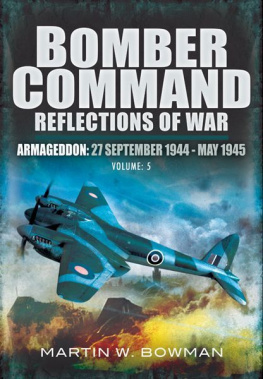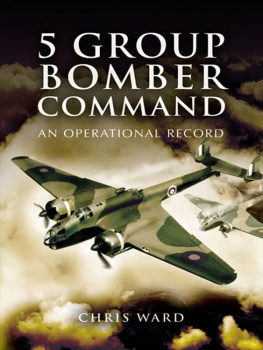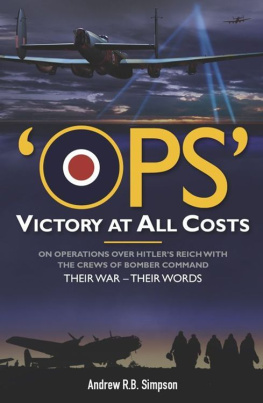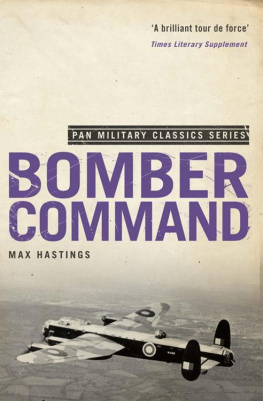
First published in Great Britain in 2012 by
Pen & Sword Aviation
an imprint of
Pen & Sword Books Ltd
47 Church Street
Barnsley
South Yorkshire
S70 2AS
Copyright Chris Ward 2012
9781783035311
The right of Chris Ward to be identified as Author of this Work has been asserted
by him in accordance with the Copyright,
Designs and Patents Act 1988.
A CIP catalogue record for this book is
available from the British Library
All rights reserved. No part of this book may be reproduced or transmitted in any form or by any means, electronic or mechanical including photocopying, recording or by any information storage and retrieval system, without permission from the Publisher in writing.
Typeset in Times by
Phoenix Typesetting, Auldgirth, Dumfriesshire
Printed and bound in England by
CPI Group (UK) Ltd, Croydon, CR0 4YY
Pen & Sword Books Ltd incorporates the Imprints of Pen & Sword Aviation, Pen & Sword Family History, Pen & Sword Maritime, Pen & Sword Military, Pen & Sword Discovery, Wharncliffe Local History, Wharncliffe True Crime, Wharncliffe Transport, Pen & Sword Select, Pen & Sword Military Classics, Leo Cooper, The Praetorian Press, Remember When, Seaforth Publishing and Frontline Publishing
For a complete list of Pen & Sword titles please contact
PEN & SWORD BOOKS LIMITED
47 Church Street, Barnsley, South Yorkshire, S70 2AS, England
E-mail: enquiries@pen-and-sword.co.uk
Website: www.pen-and-sword.co.uk
Foreword and Acknowledgements
As always in my books I have attempted to provide as much detail as possible in the narrative section. There is insufficient space to make mention of every loss of an aircraft and/or crew, and I have, therefore, featured particular squadrons as being representative of the fortunes of all within the Group operating the same aircraft type at the same time.
I would like to register my gratitude to the archivists in the collections department at the Yorkshire Air Museum at Elvington, Bill and Mark Napier and John Larder, for selecting and processing photographs for this publication and for answering queries. Unless otherwise stated the photographs are from this source.
As always I am indebted to my good friend, Andreas Wachtel, for providing photographs of some of the Bomber Command crewmen whose remains rest in Den Burg Cemetery on Texel. The background information on these and the Luftwaffe pilots involved in their demise results from Andreass exhaustive research. Andreas is also responsible for bringing together the information on the crew of John Wilson to whom this book is dedicated. The details of their final flight are described in the appropriate section of this publication.
Chris Ward. Lutterworth, May 2012.
This book is dedicated to James Hopkins and the other seven occupants of 77 Squadron Halifax JD413 KN-G, which crashed in Germany on the way home from Berlin in the early hours of 1 September 1943.
| Flight Lieutenant J.L. Wilson | pilot | KIA |
| Flight Sergeant R.W. Barlow | second pilot | KIA |
| Sergeant J.F. Hopkins | flight engineer | PoW |
| Flight Sergeant J.J. Leicester | navigator | PoW |
| Sergeant R.A. Sims | bomb-aimer | KIA |
| Sergeant E.J. Wilson | wireless operator | DoI |
| Sergeant J.A. Baxter | mid-upper gunner | KIA |
| Pilot Officer K.G. Sheward | rear gunner | KIA |
General Notes
This profile is a reference work on the activities of the squadron during World War II. Bomber Command operated exclusively from stations in the UK, and used overseas bases purely for shuttle operations, or as advanced staging posts for specific purposes. For this reason, periods spent on detachment or permanent postings to overseas Commands do not fall within the scope of this work.
This profile is not intended to serve as a comprehensive squadron history, but to provide as much information as possible in a non-anecdotal form. The brief history narrative is basically an account of Bomber Commands war, with the individual squadrons involvement interwoven into it. The publications listed in the Bibliography are not only recommended reading, but represent the best available sources of information for serious students of the subject. The operational record is based almost entirely on the figures provided in the Bomber Command War Diaries by Martin Middlebrook and Chris Everitt, and I am indebted to Martin Middlebrook for allowing me to use them.
An aircraft is included in Chapter 3 if a) it spent time on squadron charge, no matter how briefly, and irrespectively of whether or not it operated; or b) the type was used operationally by the squadron. Information is restricted in most cases to where from and where to, unless it completed its service with the squadron, in which case some detail of its demise appears. Aircraft which failed to return have the date and target recorded. Where no information follows the serial number of a type still in use when the squadron departed Bomber Command or at wars end, it can be assumed that the aircraft was still on squadron strength. However, where there is a blank space following the serial number of a type which has been withdrawn from service with Bomber Command, it signifies that I dont know its ultimate fate. An absence of information does not imply that the aircraft flew no operations during its time with the squadron.
Finally, information has been drawn from a variety of sources, ranging from Records Branch to individuals with squadron connections, and I am grateful for their contributions. There will inevitably be errors and omissions when dealing with a subject as vast as Bomber Command, and I am happy to be corrected and/or updated by readers.
CHAPTER ONE
A World War II Operational Record
4 Group Bomber Command was born out of the expansion programme prompted by events in Europe during the thirties. It was formed at Mildenhall on 1 April 1937 as the offspring of 3 Group, and the future Bomber Command chief, Air Commodore A.T. Harris, was installed as its first Air-Officer-Commanding on 12 June. By the end of the month the Group Headquarters had moved from Suffolk to take up residence at Linton-on-Ouse in Yorkshire, the county with which the Group would forever after be associated. The stations at Leconfield, Driffield, Dishforth and Finningley were brought into the fold along with their resident units, respectively, 97 & 166 Squadrons, 75 & 215 Squadrons, 10 & 78 Squadrons, 7 & 76 Squadrons and 51 & 58 Squadrons, the last two mentioned actually located at Boscombe Down while construction work was in progress at Linton-on-Ouse. The Group inherited a variety of aircraft, Heyfords, Whitleys, Virginias, Wellesleys and Ansons, which reflected the operational and training roles of the squadrons. Apart from the Whitley Mk I, which equipped 10 Squadron only, the remaining types were obsolete. 78 and 58 Squadrons were next to re-equip, and thus accounted for the full meagre production run of a little over thirty machines of the Mk I.
When war came on 3 September 1939, the squadrons of 4 Group alone had the necessary training and experience in night-flying to venture deep into hostile territory, the rest of the Command having been trained for daylight operations in line with the theory of the inviolability of the self-defending bomber formation. Five squadrons, 10, 51, 58, 77 and 102 were declared operational immediately, while 78 Squadron was held in reserve as a Group pool training unit to feed fresh crews into the line. 10 Squadron, known as Shiny Ten, was still stationed at Dishforth and was under the command of W/C Staton, a World War I pilot in his early forties. 51 Squadron was commanded by W/C Silvester and resided at Linton-on-Ouse, a station which it shared with 58 Squadron under W/C Potter. 77 and 102 Squadrons, meanwhile, occupied Driffield under the command of W/Cs Bradbury and Toogood respectively. 78 Squadron was the first to receive the Whitley Mk V, and did so during September 1939. Under the command of W/C Harrison, who had been in post since March 1937, 78 Squadron moved to Ternhill on 1 September as part of the scatter arrangement, but returned temporarily to Dishforth on the 15th, where it shared the facilities with 10 Squadron. On the first night of hostilities, the 3/4th, three 51 Squadron Whitleys and seven from 58 Squadron were loaded with more than 5 million propaganda leaflets which were to be dispensed over Hamburg and Bremen in Germanys north, and nine cities in the Ruhr. There were no losses to the enemy defences, but three of the Whitleys landed in France, among them 58 Squadrons K8969 with the crew of F/O ONeill, which was written off in a forced landing after seven and a half hours in the air. Two 102 Squadron aircraft failed to return from operations on the night of the 8/9th, K8950 coming down east of the Ruhr to deliver the entire crew of S/L Murray into enemy hands, while K8985 strayed into neutral Belgian airspace and was forced to land. Its crew became interned, and although they soon returned to the UK, the Whitley remained and was ultimately destroyed during the German invasion. 58 Squadron sustained its second casualty on the night of the 10/11th, when K8965 crashed on take-off from Rheims-Champagne airfield when bound for a leafleting sortie. The Whitley caught fire, but not before Sgt Dixon and his crew had scrambled clear with nothing more than a few cuts and bruises between them.

